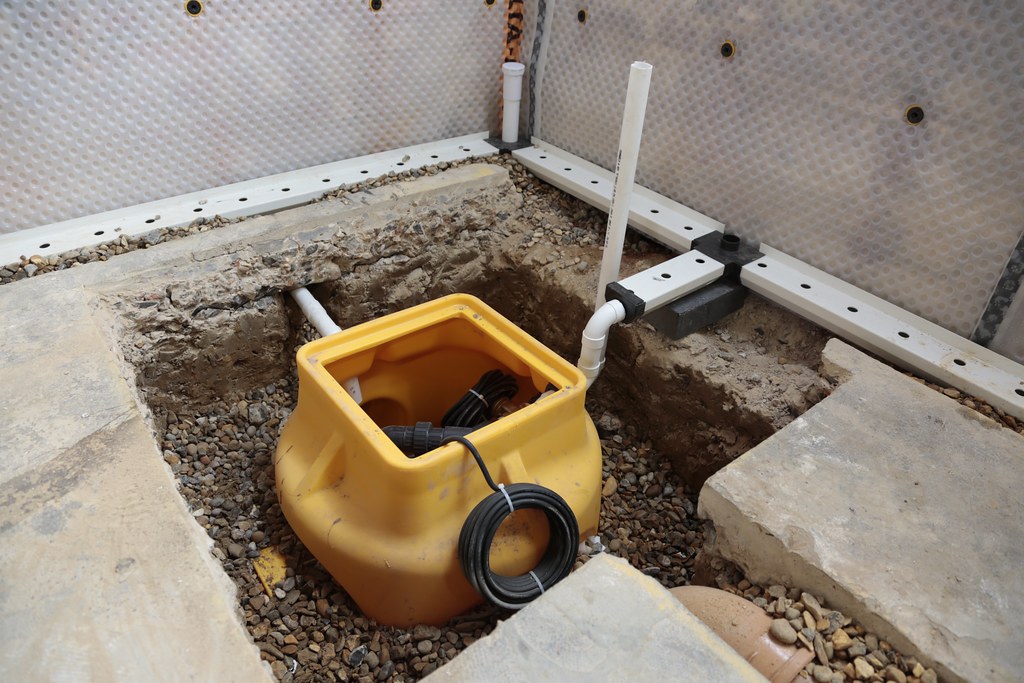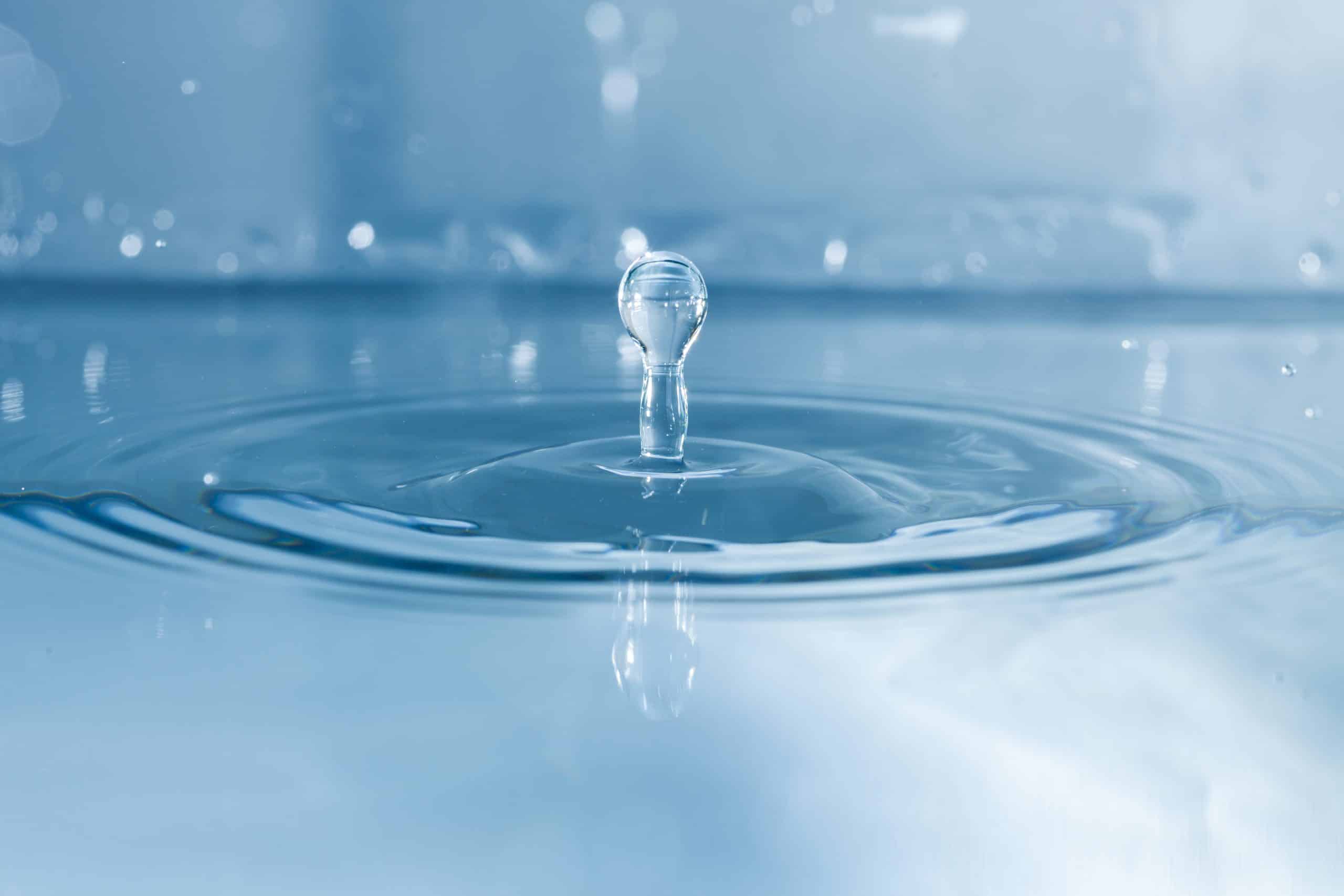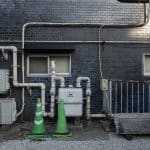Contents
- 1 What is a Sump Pump?
- 2 Types of Sump Pumps
- 3 What Size Pump Do I Need?
- 4 Sump Pump Costs
- 5 How Much Does It Cost to Replace a Sump Pump?
- 6 We treat every basement like our own — with the utmost care and highest quality as our top priority
- 7 Sump Pumps Life Expectancy
- 8 What to Do When Something Goes Wrong
- 9 Sump Pumps and How They Work FAQ
Sump pumps are an essential piece of equipment in many homes for a reason. They are used to protect basements and crawl spaces from flooding. In this article, we’ll explain what sump pumps are, the different types available on the market, how to pick the right size pump for your needs and more.
What is a Sump Pump?
A sump pump is a device homeowners use to remove water from a basement or crawlspace. It’s usually installed in a sump basin, which is a hole in the basement floor that collects water. The water is then pumped out into a drainage system or outdoors.
Sump pumps are also absolutely vital if you live in a flooded area. They are convenient instruments that help to keep basements and crawl spaces dry, used as an additional device for proper interior basement waterproofing. If needed, the pumps also remove water from hot tubs or pools.

Types of Sump Pumps
There are several different types of sump pumps that fit different needs. They mostly vary in how they are installed and powered.
Submersible sump pumps
Submersible pumps are designed to be submerged in the sump pit. They are the most common type of sump pump and are usually the most reliable and efficient. Since they function underwater, they produce less noise. All benefits considered, they are harder to maintain and more expensive to install.
Pedestal pumps
Pedestal pumps are mounted above the sump pit and are usually less expensive than submersible pumps, but they do produce more noise. Though easier to reach for repairs, some plumber experts consider them less efficient and reliable. Both types of pumps should be covered and installed properly to function as intended. A covered sump pump will make less noise and will more likely withstand any unexpected accident.
Battery-operated backup sump pumps
Backup pumps are of great help in case of power outages. However, they don’t replace the main pump and turn on only in case of a power failure. One thing is for sure: battery-operated backup pumps provide peace of mind in case of a power outage.
Water-powered backup pumps
Water-powered backup pumps operate using water power and are typically more reliable than battery-operated backup pumps. They have unlimited runtime but require strong and steady water flow. In a house with low water pressure, it’s highly probable that it won’t work properly.
Combination sump pumps
These pumps combine a submersible pump with a battery-operated backup pump. They provide the most reliable protection from flooding but are also the most expensive option. Combination pumps are cost-effective, but they also tend to be large and may not fit in smaller sump pits.
What Size Pump Do I Need?
The size of the sump pump you need depends on the size of your sump pit and the amount of water that needs to be pumped out. Each pump comes labelled by two inversely proportional figures:
- Head (the vertical distance that water must travel from your sump pump to the outlet pipe);
- Flow (volume of water that the pump can displace (in gallons per minute)).
This is because a pump should work harder to push water further, thus decreasing its efficiency.
Determine Flow Rate
The flow rate of a sump pump is measured in gallons per hour (GPH). To determine it, measure the sump pit and calculate the volume of water it can hold. Then use this number to determine the GPH rating of the pump you will need:
- Wait for a rainy day
- Turn your pump on and make it push water until it drops below the shutoff level
- Disconnect pump from electricity
- Measure the distance the water rises in one minute
We hope you did it right! A small tip: multiply the result you get by two. This ensures your basement’s safety in case of severe storms.

Measure
Once you have determined the flow rate of the sump pump you need, it’s time to measure the vertical distance from the bottom of your basement to the outlet pipe. You need to do this to be sure that water will be quickly removed from your basement. Take into account every small detail like valves, joints, narrow pipes since they increase friction and may require a more powerful sump pump. Consult with plumbing experts in case you have any doubts.
Sump Pump Costs
The cost of a sump pump varies greatly depending on the size, type, and brand. The average price fluctuates between 130 to 670 CAD. Additionally, installation costs vary depending on the difficulty of the job. If you don’t already have a sump pit, digging it can be costly. Expect to pay 3,358 – 6,717 CAD.
How Much Does It Cost to Replace a Sump Pump?
A basic submersible pump replacement costs approximately 670 CAD, including the pump’s price. If you are comfortable installing it yourself, you are free to pay only for the pump. Read this post to learn more about underpinning costs in case you want a bigger renovation project from underpinning experts. Or, it may be easier for you to request a free estimate tailored to your needs by visiting this page or calling us directly.
We treat every basement like our own — with the utmost care and highest quality as our top priority
Basement underpinning is an effective way to increase your comfort while making your basement uninhabitable for bugs or fungus.
Sump Pumps Life Expectancy
Sump pumps typically have a life expectancy of five to ten years, depending on the pump’s type and quality. Regular maintenance, cleaning the sump pit and checking the float switch, surely extends the pump’s lifespan.
Maintaining a Sump Pump
Scheduled sump pump’s maintenance is vital for its proper and efficient functioning. Luckily, it’s not that hard to do it yourself. The upkeep routine depends on the pump type, but usually includes these steps:
- Keep the sump pit clean and free of debris
- Check the float switch to make sure it’s operating properly
- Check the power cord for any signs of wear or damage
- Make sure the pump properly connects to the power source
- Inspect the check valve and make sure it’s in good working order
If you don’t want to find yourself in a situation where your sump pump isn’t working and water keeps coming into your basement, we recommend that you service your pump every six months.
What to Do When Something Goes Wrong
If your sump pump stops working, there are a few things you can check to identify and fix the issue.
Debris in the Pump
One of the most common causes of sump pump failure is debris clogging the pump. This happens due to a buildup of dirt, leaves, or other debris in the sump pit. Debris reduce the pump’s efficiency, causing it to fail. To prevent debris from clogging the pump, it’s important to regularly check and clean the sump pit.
Clogged or Frozen Discharge Lines
When discharge lines become blocked or frozen, they prevent the pump from properly draining water away from the home. To prevent this, it’s important to check them regularly and to make sure they are draining properly. If the lines freeze, it’s crucial to thaw them as soon as possible.
Wrong Sized Pump
If the sump pump is the wrong size for the sump pit, it might fail to adequately move water out of the sump basin. This leads to water remaining in the sump basin and eventually overflowing.
Missing or Broken Check Valve
A check valve prevents water from flowing back into the sump basin after it has been pumped out. If the check valve is missing or broken, water flows back into the sump pit, causing an overflow. Make sure the check valve is in good working order at all times.
Improper Connection to Sewage Line
If the sump pump is improperly connected to the sewage line, water can back up into the sump pit. This leads to water overflowing from the sump basin and damaging the home. Consider designing a new outflow path if this is your case.
Float Switch Stuck On
If the sump pump’s float switch is stuck in the ‘on’ position, the pump runs continuously when it doesn’t need to and eventually fails or even causes the motor to burn out. If debris clog it, clean it and check whether the switch is unstuck.
When working, sump pumps vibrate and move a bit from their initial position. Try moving it a bit inside the pump pit. This may help you unstuck the switch.
Not Turning On
If your sump pump isn’t turning on, there could be several potential causes:
- It’s disconnected from the power supply, or there was a power failure;
- The switch or float could be stuck in the off position;
- Debris damaged or clogged the pump;
- There is a leakage in the check valve, or it’s blocked.
You can find dozens of videos on youtube for proper maintenance and for solving any pump issues. However, we recommend contacting plumber experts. Remember, miser pays twice.
Expert opinion
Evelyn J. Kiser
Evelyn is an expert with over 12 years of experience in basement lowering, foundation strengthening and waterproofing. She has earned a reputation as a professional who solves complex problems and knows the answers to all questions.
Sump pumps are essential for keeping basements and crawl spaces dry and free of water damage. They pump water out and into a nearby drain or another area. Understanding the basics of sump pumps, how they work, the different types available, and how to know if they’re right for your home will help you make the best choice for your needs. Additionally, having a battery backup for your sump pump gives you peace of mind in case there’s a power outage.
Sump Pumps and How They Work FAQ
-
How Do I Know If I Need a Sump Pump?
If you live in an area that experiences a lot of rain or flooding, you may need a sump pump to keep your basement or crawl space dry. If you notice water collecting in certain areas or if your walls or flooring are damp, it could be a sign that a sump pump is needed. A leaky basement is a much more severe problem than it seems at first, so it is better to prevent it with proper basement waterproofing.
-
Why a Sump Pump Shouldn't Work Non-Stop?
A sump pump should normally run intermittently and only when water enters the sump pit until the water level is below the pump's suction level, typically about 1/4 inch. It is generally recommended that a sump pump be inspected and serviced yearly or more often, and the sump pit be cleaned out every two to three years.
-
What is a battery backup for a sump pump?
A battery backup sump pump system is an important part of keeping your basement dry by providing an additional layer of protection against a power outage. This system includes a separate battery-powered sump pump that is installed alongside your existing sump pump.
When it senses a power outage, the battery backup pump will automatically turn on and begin pumping water out of the sump pit. The battery backup pump is connected to a deep-cycle marine battery, which provides the power to operate the pump during a power outage. These batteries typically have a lifespan of 5-7 years and should be replaced when needed.
The battery backup sump pump system also includes an alarm system that will alert you if the power goes out and the battery backup pump needs to turn on. This feature is especially important in the event of a severe storm, as it will give you the opportunity to take action if necessary.
-
Is Sump Pump Failure Covered by Insurance?
The answer to this question depends on your individual home insurance policy. Generally, most home insurance policies will cover water damage resulting from sump pump failure, but you should check with your specific provider to verify coverage.
-
When Its Time to Call Your Home Insurance Provider and What Will He Want to Know?
If you are considering installing a sump pump in your home, your home insurance provider will want to know a few things:
- Sump pump type;
- Does it have battery backup or not;
- Sump pump capacity;
- Does it have proper maintenance or not?
A flooded basement insurance claim, on average, is almost 60,000 CAD! Thus, insurance providers are highly interested in sump pump installation, especially in risky areas.
